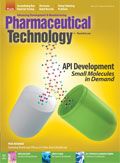Electronic Batch Records Offer Advantages beyond Automation
Transitioning from paper records to electronic batch records decreases costs and increases efficiency.
alengo/E+/getty images

The accuracy and ease of use provided by electronic batch records (EBR) contributed to their adoption by large pharmaceutical companies. While the cost of transitioning from paper to EBR may result in hesitancy for some manufacturers, the reduction in error and decrease in batch release time offers increases in cost savings and efficiency.
Pharmaceutical Technology spoke with Dennis Brandl, president of BR&L Consulting, about the advantages and disadvantages in transitioning from paper to EBR, how the integrity of data is maintained, changes in operation management, and recommendations and strategies for implementation.
Transitioning from paper to EBRPharmTech: What are the primary challenges in transitioning from paper to EBR?
Brandl: One of the primary challenges is to realize that you really cannot just put your paper batch records into an electronic format. There are major advantages to electronic batch records. They allow you to improve the process that you are currently using, such as reducing the need for dual signatures or automated calculation, so that operators don’t need to sit with calculators and hand type the numbers. Just implementing the current processes you have, without streamlining and removing the unneeded checks and work, means you miss many of the advantages that you would get by implementing an electronic batch record system.
PharmTech: What are the advantages in transitioning from paper records to EBR?
Brandl: Reduction in manual errors is one major advantage from transitioning to an electronic batch record. When you look at the paper records that exist on many systems, they can be stacks of paper that are inches high and the dates and times on those have to be manually entered; in an EBR, they’re automatically captured. Electronic data, which can be read directly from the equipment, can be automatically captured instead of transcribed by operators, and you can ensure that no workflow steps have been accidently skipped because somebody missed a piece of paper.
Another major advantage is the ability to perform production releases of batches and production runs in minutes instead of weeks. An electronic system can check to make sure that there are no exceptions or errors in a batch. If there are no errors or exceptions in the batch, then you can do a production release without having to have somebody manually review, potentially hundreds of pages of a paper batch record.
PharmTech: How is the integrity of electronic batch data ensured?
Brandl: The same methods that are used to ensure the integrity of financial data and transactions can be applied to electronic batch data. That means you can create copies that cannot be deleted, which might be a DVD backup. You can have robust and tested continual backup processes with offsite storage. It is extremely important to have the offsite storage simply because these are IT systems; if you lose one server room, you don’t want to lose everything. Implementation of strong network and user account security are measures used in financial data and these are the same measures that should be taken with electronic batch records. The electronic warehouses that contain this are replacing the warehouses full of paper records and doing it at a tiny fraction of the cost and space that you normally have.
Integrating an electronic systemPharmTech: How has the operation management of data collection changed since the integration of EBR?
Brandl: The information was previously unconnected and only available through paper trails. It’s now being combined into data warehouses that combine all electronic batch records and the related data, such as lab reports, data historian graphs, and maintenance records into one place and those things are being indexed for fast searches. The ability to do these fast searches means that the time it takes you to do investigations and studies is significantly reduced. Many times today, in investigations or studies, you can spend 80% of your time simply trying to acquire the data or getting people to go look up the paper records for you. With electronic systems, you can do these online, fast, and sitting at your desk.
PharmTech: What recommendations do you have for the implementation of EBR? Are there any strategies that should be considered?
Brandl: When you are implementing an electronic batch record system, it is best to start with a few major impact areas and not attempt to go completely electronic in one step. A complete EBR implementation will touch all areas of a facility, but it will impact production. In order to reduce the impact, it is best to start at one or two areas and grow the applications to cover all paper records. These may be the areas that are of particular impact to you; it might be something as simple as container management, checking if containers are sterile, and recording the container’s location. It may be material management or it may be workflows, but start with one of those major impact areas where you are currently having problems and address that. All the systems that are out there today are modular and allow you to add the extra features in place. So start small, start on the major pieces, and then grow it.
Article DetailsPharmaceutical Technology
Vol. 39, No. 5
Pages: 50-51
Citation: When referring to this article, please cite it as A. Roberts, “Electronic Batch Records Offer Advantages beyond Automation,” Pharmaceutical Technology39 (5) 2015.

Drug Solutions Podcast: A Closer Look at mRNA in Oncology and Vaccines
April 30th 2024In this episode fo the Drug Solutions Podcast, etherna’s vice-president of Technology and Innovation, Stefaan De Koker, discusses the merits and challenges of using mRNA as the foundation for therapeutics in oncology as well as for vaccines.